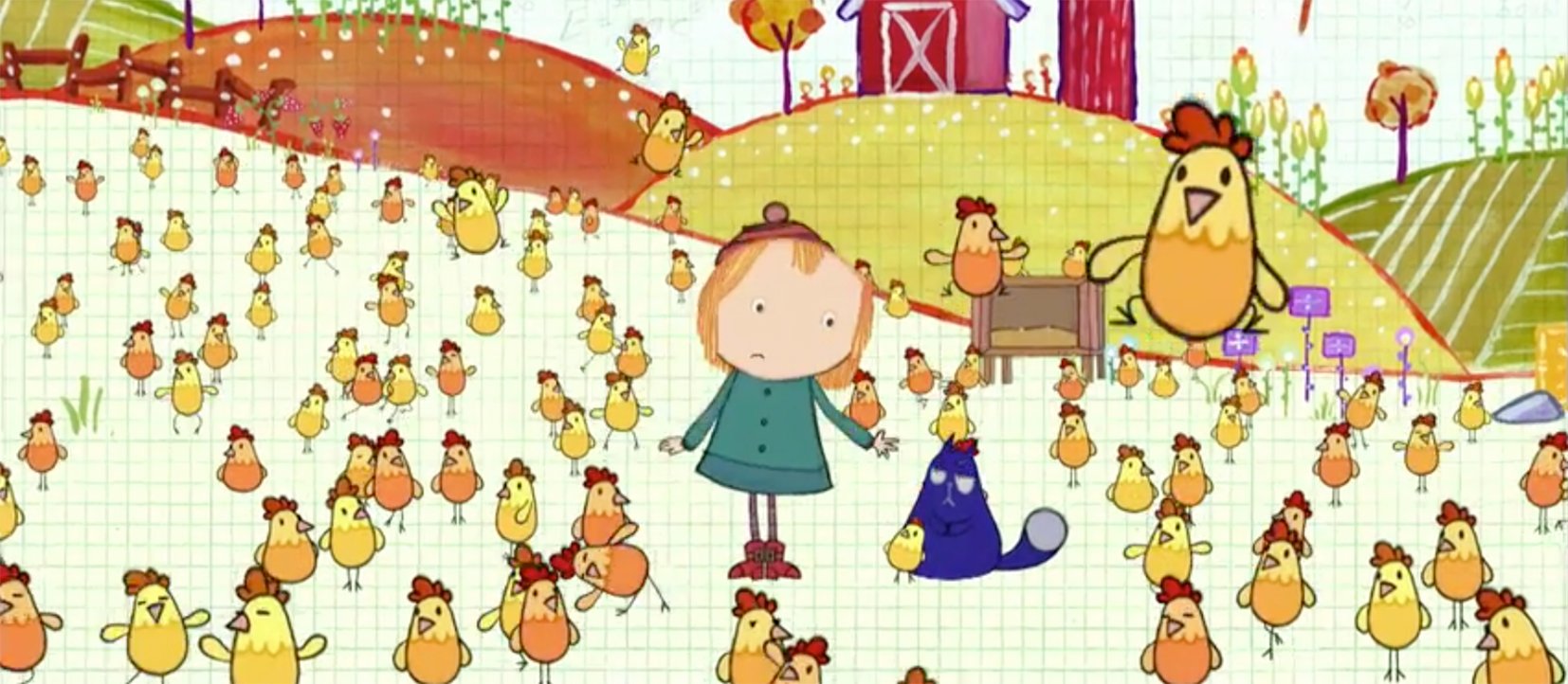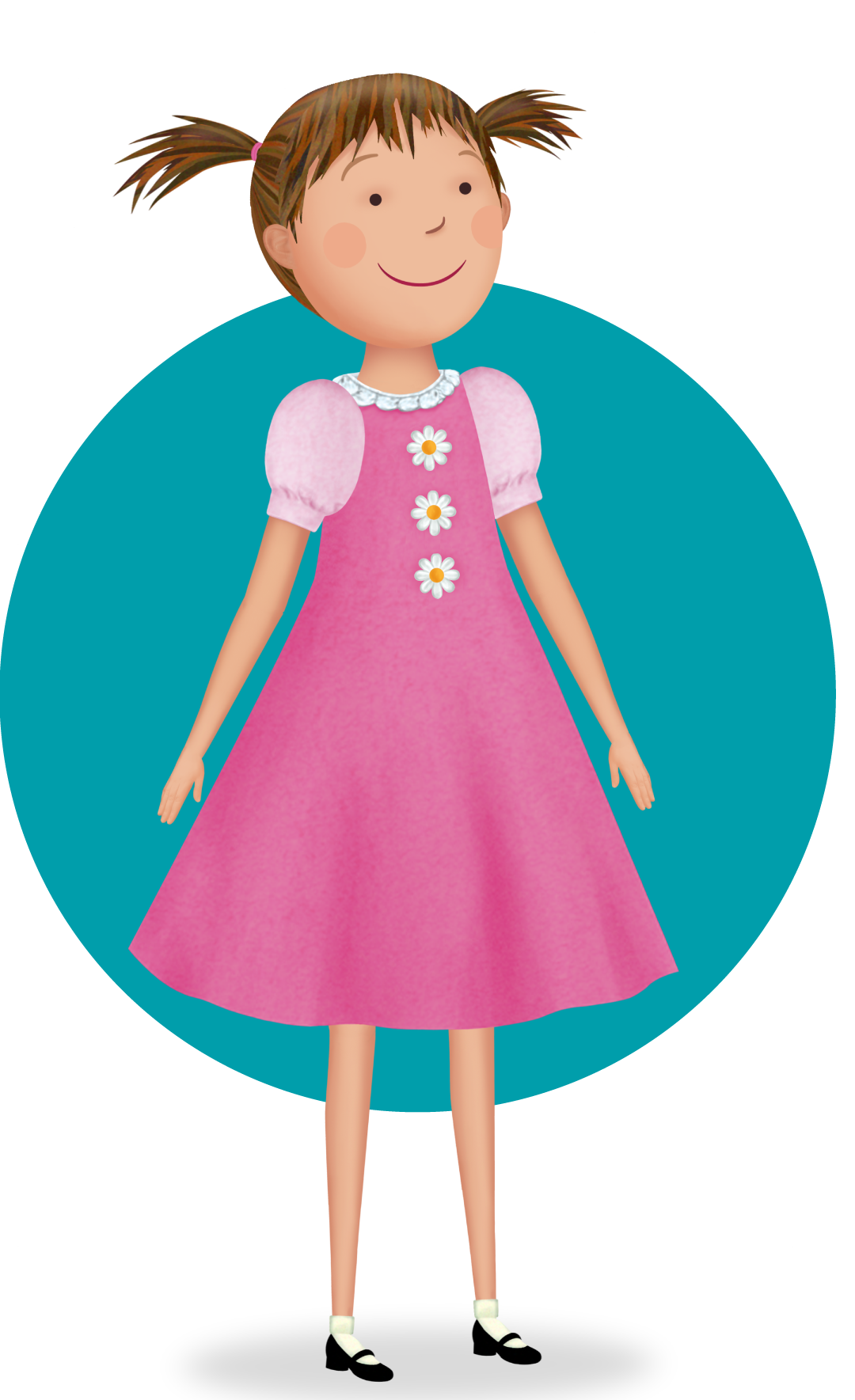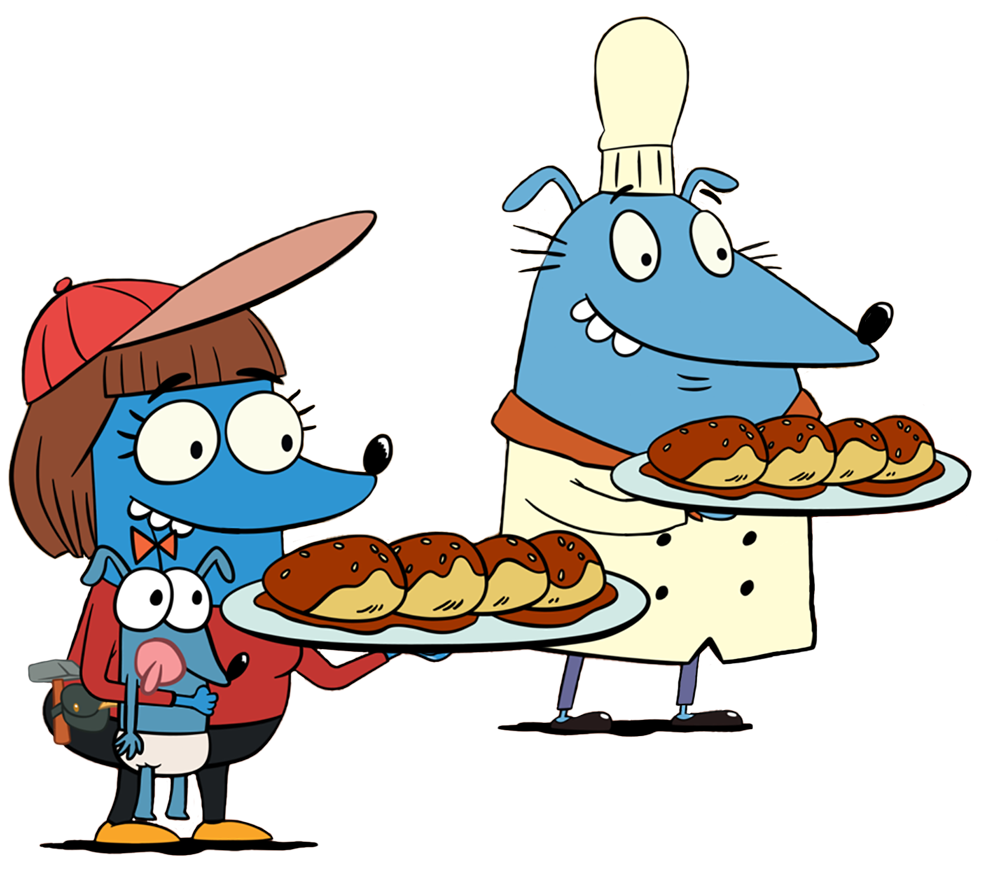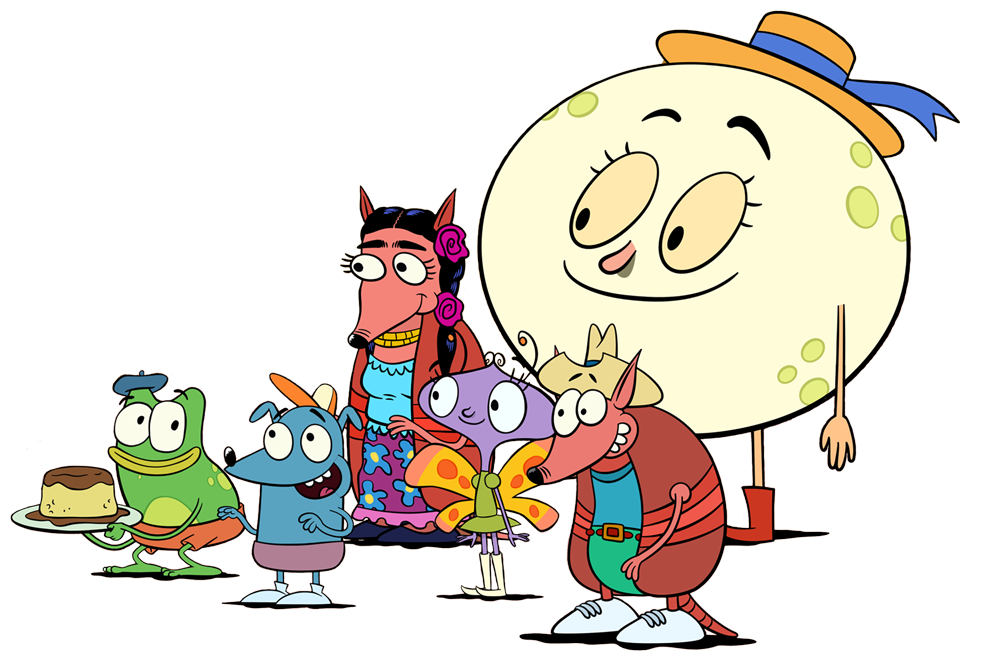Counting Your Chickens | Activities | WTTW Kids Learn & Play
With the help of Peg + Cat, students will begin to assimilate quantity to the word assigned to that amount. The key to this game is to collect the exact number assigned—not any more or less, helping the student answer the question “how many?”

Activity Prep
- Before the activity, hide 55 cotton balls for each group of ten children all over the space where the activity will be taking place. Cotton balls will represent chickens in the activity. There can be more than one “chicken” in one spot, but they should be scattered throughout the space.
- On the bottom of one bag, write the numeral “1”; on the bottom of the next bag, write the numeral “2”; and so on. If there are more than 10 children, use more than 10 bags and repeat numbers, or have the children work in teams. If there are fewer, give each child more than one bag. THE WRITING SHOULD BE ON THE BOTTOM OF THE BAG AND NOT VISIBLE UNTIL ALL THE BAGS ARE DISTRIBUTED.
Activity
- Ask the children what animal makes the “peep” sound and acknowledge them when they correctly answer “chicken.” Tell them that they are now going to watch a clip from Peg + Cat in which Peg and Cat have to deal with a problem with chickens.
- View the “Picking Up Chickens” video clip.
- Explain to the children that, like Peg and Cat, you are “Farmer [insert your name]” and that you have a big problem! You have lost your chickens and need help to find the chickens and bring them home.
- Give each child a paper bag and explain that the number on the bottom of each child’s bag indicates how many chickens that child needs to find. To make sure the children know how many they should find, go around the room and have the children identify the numbers on each of their bags.
- Get hunting! The children should look around the room for their assigned number of chickens. As they search, remind the children that the goal is to find only the number of chickens written on their bag, no more and no fewer.
- Gather the children back together as a group and count out the chickens in each bag (with any attending adults helping). If a child collected more or less than his assigned number, the adult should take the opportunity to discuss addition and subtraction, using the concept of more and less. For example: “Sam was supposed to collect 10 chickens. He collected 12 chickens. Is 12 more or less than 10? What do we need to do to make sure he has only 10 chickens?”
- Thank the children for helping find the chickens and congratulate them on solving the problem by playing the “Problem Solved” song.
Considerations/Modifications/Extension Activities
- For children that need additional assistance, bring more adults in to help the activity run smoothly or have children work in teams.
- For more adventurous children, have them figure out for themselves how to remedy any issues, e.g., too many “chickens” in a bag or not enough “chickens” in a bag.




